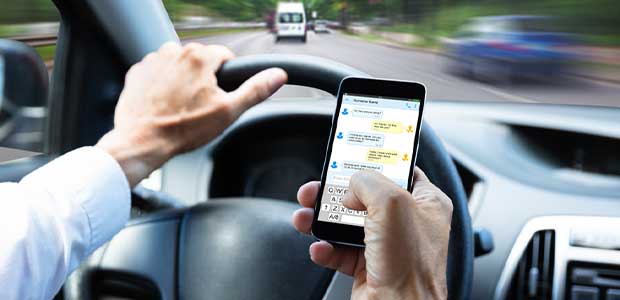
How Can Distracted Driving Affect Occupational Safety?
Distracted driving can affect the driver, the reputation of the company and others on the road.
- By Henry Tokley
- Dec 15, 2022
Many people need to drive for their job. As well as traditional driving roles like delivery drivers, truckers and emergency services workers, professions such as real estate agents, postal workers and charity workers are increasingly required to drive to fulfill their duties.
No matter how long you’ve had your license, getting behind the wheel for work can come with added responsibilities. Not only may you potentially be driving a company car, but you’ll also be under time pressure to get to your next appointment, which can make you into a more risky driver than you usually are. Unfortunately, this puts you and other road users at risk—so what are the dangers you should avoid, and how can you and your employer support safer driving? Let's take a look.
Distractions when Driving
In order to remain focused on the task at hand, you’ll need to minimize distractions in your vehicle. Especially if you’re a younger driver, have passed your test fairly recently or are simply driving an unfamiliar car, it can be hard to pay full attention to the road, rather than trying to remember where your windscreen wipers are or programming your satellite navigation. However, even glancing down at the buttons in your vehicle can mean that you miss important hazards.
Instead, program any navigation devices from a safe location, and make sure that you’re familiar with how the car works before you set off. You should also turn your phone to silent to stop incoming notifications from distracting you—if you can, try to avoid taking calls. Letting colleagues know your schedule or blocking out travel time in your work calendar can help with this. If you need to be available, connect your phone to your car or get a Bluetooth headset so that you can make sure both hands stay firmly on the steering wheel.
Dangerous for Yourself and Others
Whilst you might feel confident that you can get yourself out of danger with quick reactions, you’re not the only person using the road. You have a responsibility to make sure that you’re looking out for pedestrians, cyclists and other motorists, and not putting them in danger.
Whilst safety should be the first priority, you should also consider that any accidents in a company branded vehicle could also be damaging to your employer’s reputation. Even before an accident occurs, if fellow road users see a driver using a phone in a branded vehicle, this will reflect poorly on the wider company. Avoiding all of the common driving distractions will help to keep both your car, and your company’s reputation, intact.
How Employers can Help Prevent Distracted Driving
To make sure that all employees are safe behind the wheel, employers could consider the following measures:
- Implement an internal test/skills demonstration for those driving a company vehicle
- Provide Bluetooth headsets for all employees who might need to take calls whilst driving
- Leave adequate space between appointments to avoid rushing
- Consider installing telematics technology to encourage drivers to stick to the speed limit
- Allow employees to stagger their start times so that they can avoid travelling at rush hours and potentially suffering with road rage
- Maintain cars to ensure that employees are able to use the lights, signals and navigation systems easily, as well as keeping warm or cool
- Be mindful of shift patterns so drivers have adequate time to rest before getting back behind the wheel
A Safer Work Environment
Part of driving for work means accepting that you might not be able to drive in the same style that you might choose to in your own time. You have a responsibility to other road users to make sure that you are well-rested, alert and focusing on the road, allowing everyone to stay safe.
About the Author
Henry Tokley is a fleet manager and safety advisor. He has worked in the transportation industry for over 25 years, and has always been passionate about improving safety. In his current role, he aims to educate drivers on how to stay safe on the road.
Henry is a highly qualified professional who takes great pride in his work. He is committed to making a difference in the lives of others, and will go above and beyond to ensure that everyone stays safe on the road.